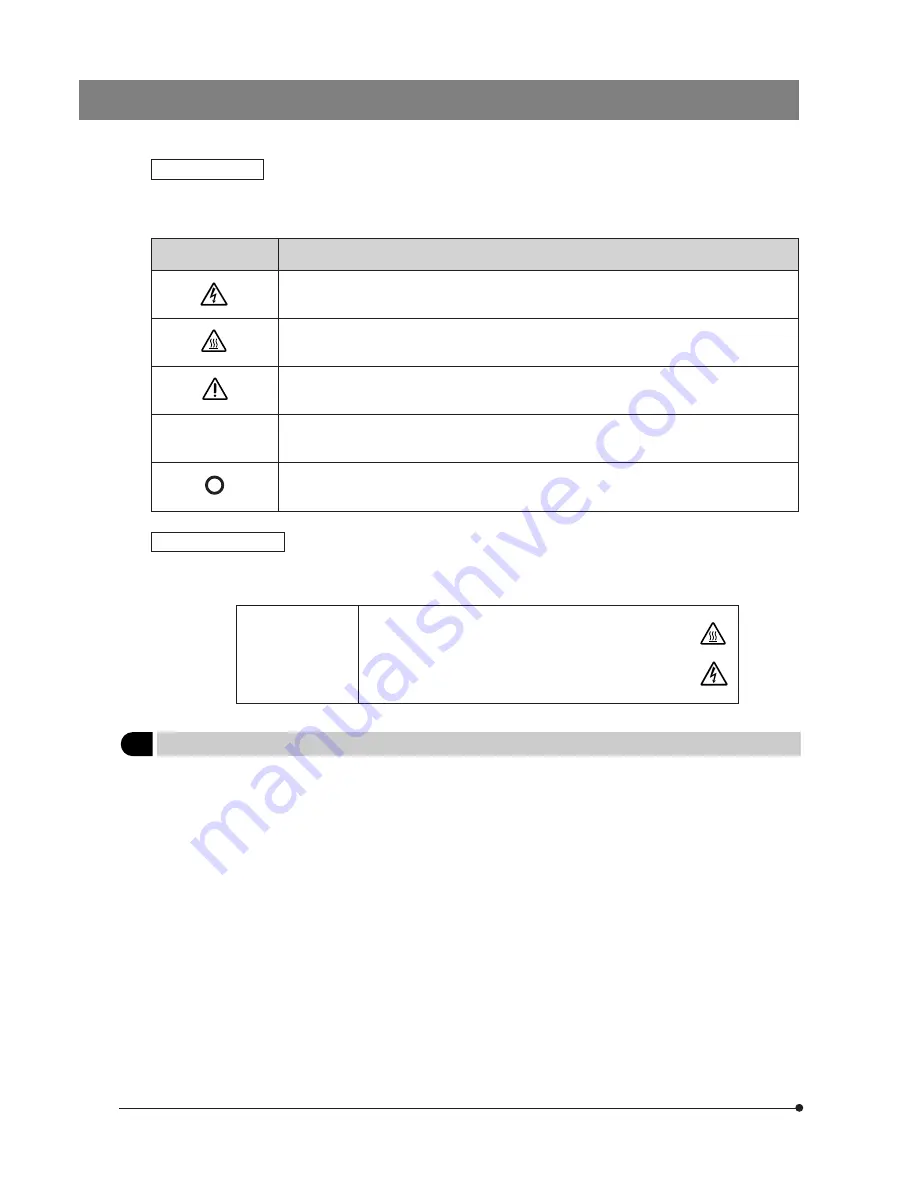
2
Symbol
Explanation
l
Safety Symbols
The following symbols are found on the microscope. Study the meaning of the symbols and always use the equipment
in the safest possible manner.
Indicates the presence of high voltage (1 kV or more). Take caution to guard against electric
shock.
Indicates that the surface becomes hot, and should not be touched with bare hands.
Before use, carefully read the instruction manual. Improper use could result in personal injury to
the user and/or damage to the equipment.
Indicates that the main switch is ON.
Indicates that the main switch is OFF.
Warning indications
Warning indications are placed at parts where special precaution is required when handling and using the System.
Always heed the warnings.
Warning indication
position:
· Mercury burner lamp housing
(U-LH100HG, U-LH100HGAPO
· Power supply unit for 100 W
mercury burner
· ND filters
(U-25ND6, U-25ND25, U-25ND50)
[Warning against
high temperature]
[Warning against
high voltage]
1
Getting Ready
1. This manual pertains only to the reflected fluorescence system. Before using this system together with the BX2 micro-
scope and associated options, make sure that you have carefully read and understood their manuals, and understand
how the system should be operated together.
2. The reflected fluorescence system is composed of precision instruments. Handle it with care and avoid subjecting it to
sudden or severe impact.
3. Do not use the system where it is subjected to direct sunlight, high temperature and humidity, dust or vibrations.
4. To allow heat from the unit to dissipate well, reserve a distance of at least 10 cm between the lamp housing and power
supply unit.
5. The power cord can also be used to cut the power supply in case of emergency. To make this possible, the power supply
unit should be installed so that the power cord connector (on the rear of the power supply unit) or the power outlet is
easily accessible for unplugging in case of emergency.
Содержание BX-RFA
Страница 2: ......
Страница 11: ...7 Make a photocopy of the observation procedure pages and post it near your microscope...







































